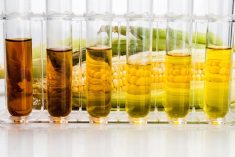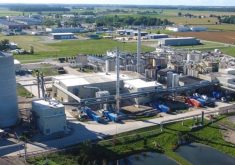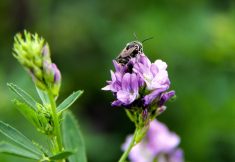If corn stover could be efficiently fermented into ethanol the way corn kernels are, stover could be a large-scale, renewable source of fuel.
“Stover is produced in huge amounts, on the scale of petroleum,” said Whitehead Institute Member and Massachusetts Institute of Technology (MIT) biology professor Gerald Fink. “But there are enormous technical challenges to using them cheaply to create biofuels and other important chemicals.”
Now, a new study from Fink and MIT chemical engineering professor Gregory Stephanopolous led by MIT postdoctoral researcher Felix Lam offers a way to more efficiently harness this underutilized fuel source. By changing the growth medium conditions surrounding the common yeast model, baker’s yeast Saccharomyces cerevisiae, and adding a gene for a toxin-busting enzyme, they were able to use the yeast to create ethanol and plastics from the woody corn material at near the same efficiency as typical ethanol sources such as corn kernels.
Read Also

Melancthon faces a new quarry fight over water, environment and farmland risks
A proposed Strada blast quarry in Melancthon, Ont., sparks regional debate over water protection, farmland sustainability, and Ontario’s aggregate policy.
Like corn kernels, corn stover is full of sugars such as glucose, fructose and sucrose that can be converted to ethanol through the use of microorganisms. But these sugars within the cellulose molecules are bound together in chains and wrapped in fibrous molecules known as lignins. Breaking down these tough casings and disassembling the sugar chains results in a chemical mixture that is challenging for traditional fermentation microorganisms to digest.
To help the organisms along, workers in ethanol production plants pre-treat high-cellulose material with an acidic solution to break down these complex molecules so yeast can ferment them. A side effect of this treatment, however, is the production of molecules called aldehydes, which are toxic to yeast. Researchers have explored different ways to reduce the toxicity of the aldehydes in the past, but solutions were limited considering that the whole process needs to cost close to nothing.
Faced with this economic and scientific problem, industries have cut back on creating ethanol from cellulose-rich materials. To tackle the toxin problem, the researchers decided to focus on the aldehydes produced when acid is added to break down tough molecules.
The team began looking for genes that specialized in converting aldehydes to alcohols, and landed on a gene called GRE2. They optimized the gene to make it more efficient through a process called directed evolution, and then introduced it into the yeast typically used for ethanol fermentation, Saccharomyces cerevisiae. When the yeast cells with the evolved GRE2 gene encountered aldehydes, they were able to convert them into alcohols by tacking on extra hydrogen atoms.
The resultant high levels of ethanol and other alcohols produced from the cellulose might have posed a problem in the past, but at this point Lam’s past research came into play. In a 2015 paper from Lam, Stephanopoulos and Fink, the researchers developed a system to make yeast more tolerant to a wide range of alcohols, in order to produce greater volumes of the fuel from less yeast.
By combining this method with their newly modified yeast, the researchers were able to efficiently make ethanol and even plastic precursors from corn stover, miscanthus and other types of plant matter.
“We were able to produce a high volume of ethanol per unit of material using our system,” Fink said. “That shows that there’s great potential for this to be a cost-effective solution to the chemical and economic issues that arise when creating fuel from cellulose-rich plant materials.”













